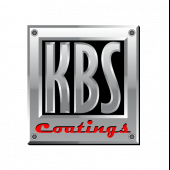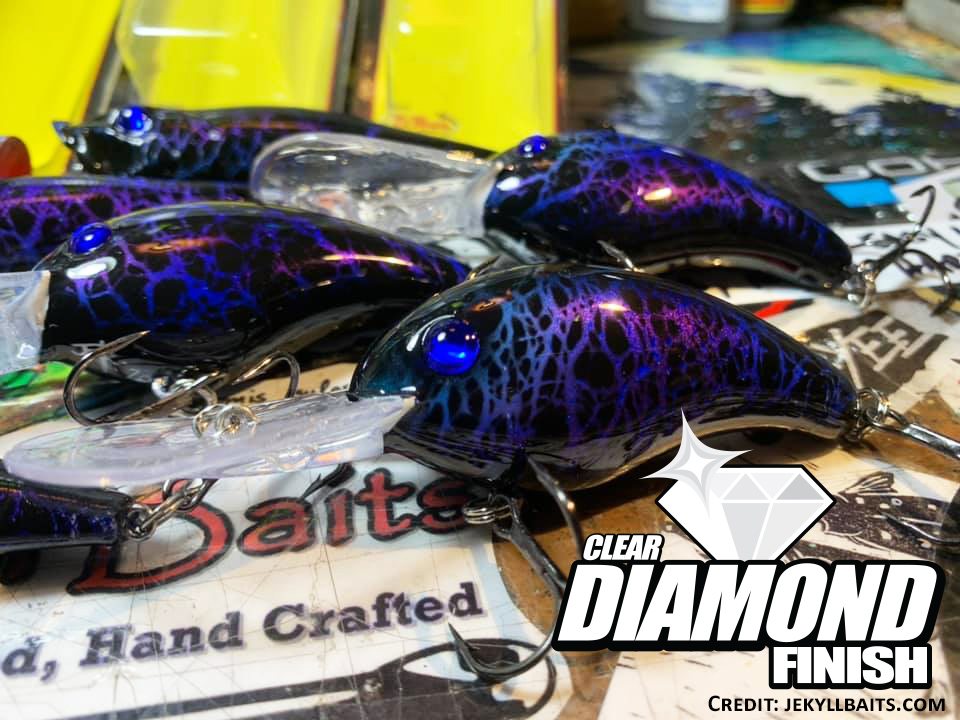Search the Community
Showing results for tags 'fishing lures'.
-
Lure Makers Need A Quality Clear Coat You might be making fishing lures for a hobby, producing them for profit, or both. Whether you are making lures for fun, or as part of a business, using quality lure making supplies can be the difference between an OK result and an excellent outcome. Choosing the proper clear coat to be used on lures is important. Clear coat has more functionality than just providing a shiny final finish. What should you consider when deciding on a clear coat to add to your stock of lure making supplies? For fishing lures, the main criteria are that the clear coat is compatible with the base coat used on the lure, that it’s hard so it will resist damage from sharp fish teeth, is flexible to remain adhered if the lure is dented (especially important with wood lures), avoids yellowing and discoloration over time, and is easy to work with. It’s also important that the clear coat is waterproof sealing wood lures away from moisture. "Clear Coat" is a generic term for a clear, or pigmented finish that is directly applied over a substrate such as wood, metal, or plastic. It is also applied over base coats to protect the color, add "depth" to the appearance, or allow enough film thickness to allow for sanding and polishing. Clear coats prolong the useful life of any surface upon which they are applied. Commonly used clear coats include lacquer, varnish, and polyurethane. Lacquer is a tree resin or synthetic resin dissolved in alcohol and is popular for sealing wood furniture. Clear lacquer can only be applied over lacquer base coats otherwise solvents in the clear lacquer will cause non-lacquer base coats to run. While clear lacquer brings out a rich, warm, and relatively scratch-resistant finish on deep-toned wood, it can yellow over time, which can distort the colors of the lure’s base coat. Lacquer can be tricky to work with and must be sprayed on carefully and left sit to cure after. Lacquer can be brittle and can dent easy because it's thin. Lacquer can also dry out and crack over long periods of time. Its not the best clear coat to add to your stock of lure making supplies. Varnish is very similar to lacquer and is a resin dissolved in a liquid for applying on wood, metal, or other materials to form a hard, clear, shiny surface when dry. However, varnish easily peels and cracks or bubbles if not applied properly. Also, it is not as tough as lacquer, or as resistant to water and chemicals. As compared to lacquer, more coats need to be applied to achieve the same thickness and it takes longer to dry. Varnish also yellows with time. Water based varnish has the advantage that it can be used over paints and can be applied with a bristle brush. Polyurethane clear coat is basically plastic in liquid form until it dries. Good quality polyurethane clear coat is a popular addition to the arsenal of lure making supplies used by most lure fabricators. This is due to its film hardness, resistance to scratches and dents (especially helpful with balsa wood), long-term durability, its ability to remain clear without yellowing, as well as user friendliness. Excellent flexibility characteristics also makes polyurethane well suited for wooden lures as it allows the clear coat to remain adhered without cracking or peeling if the wood becomes wet and swells, or the wood is dented. Polyurethane clear coats can be applied to all components of a lure including plastic, wood, and metal. Polyurethane clear coat is offered in water-based and oil-based versions and comes in a variety of finishes from satin to glossy. Water-based polyurethane is often used due to its low odor and toxicity. It goes on clear without adding a slight darkening in base coat color appearance, and doesn’t yellow over time, which oil-based versions can do. As well it dries much faster, in some cases up to three times faster. Oil based polyurethane dents and peels easier than water based, however, some water-based versions scratch easier. When it comes to safety, a quality water-based polyurethane clear coat will have significantly lower (up to 50%) volatile organic compounds or VOCs than oil based. Polyurethane clear coats are available in versions that can be applied with a brush or sprayed. Dipping of lures is common and polyurethane clear coats work great for that purpose. Application of water-based polyurethane differs from that of oil-based in that it applies in much thinner coats. An unlimited number of coats of water-based can be applied while only a couple layers of oil-based can be applied before scratching or chipping becomes a problem. Polyurethane clear coats are available in 1K (one part), or 2K (two parts that need to be mixed) versions. 1K polyurethane is more user friendly as the user doesn’t require mixing which saves time and hassle. For lure making, KBS Coatings offers DiamondFinish Clear, which is a moisture cured, crystal clear, one part urethane clearcoat that is that is UV stable, durable and extremely tough. It can perform in the toughest environments without yellowing, cracking or peeling. Because of its Advanced Cross-Linked Coatings Technology, it performs extremely well for making fishing lures. This technology makes the coating both flexible and durable. For a demonstration of DiamondFinish Clear’s flexibility and durability see our video. DiamondFinish Clear can be used with all fully cured base coats. DiamondFinish Clear is ideal for any type of lure surface, including jig heads. When desired, it can be tinted with color, and it is also great for suspending glitter in your finishes. DiamondFinish Clear is a single component (1K) coating, which means user-friendliness with no self-mixing of two parts and can be spayed-onto lures, applied with a brush, or the lure can be dipped in the clear coat. If brushed, the coating is self-leveling, so it leaves a beautifully smooth surface without brush marks. For best performance, DiamondFinish Clear must be thoroughly stirred in circles as well as from top to bottom. See THIS VIDEO for a demonstration. DiamondFinish Clear is a moisture cured coating. Meaning that it cures by reacting with water vapor in the air. The higher the humidity, the quicker the cure time. It is important to remember DiamondFinish Clear can be contaminated in the storage container or exposure to the air or by moisture dripping off the lure. If the lure is being dipped, it is recommended to pour off a working amount in a small jar and close-up the container of clear coat. Again, air in the atmosphere can cause DiamondFinish Clear to begin hardening in the can. To keep this from occurring KBS Paint Saver can be a useful part of your lure making supplies. KBS Paint Saver contains Argon and Nitrogen gases which are heavier than air and 100% dry. These gases are sprayed into the container of DiamondFinish Clear which displaces the air so no moist, humid air is left in the can that could cause it to prematurely cure and harden. See our video for a demonstration. Quality lure making supplies are essential to producing quality lures. Used by hobbyists and professionals alike, DiamondFinish Clear preserves, protects and beautifies your lures, and is an important addition to your lure making supplies list. For more information on DiamondFinish Clear click HERE.
-
- 1k clear coat
- fishing lure clear coat
- (and 2 more)
-
DiamondFinish Clear is the Preferred Clear Coat of Fishing Lure Makers! 👍Easy Application 👍Insane Durability 👍Water Clear Shine 👍High Solids = More Coverage Per Coat 👍Ideal For Immersion in Water
-
- clear coat
- fishing lures
-
(and 2 more)
Tagged with:
-
“This clear-coat adds luster and value to our fishing lures. Our customers really appreciate the quality.” -RSR Lures DiamondFinish Clear
-
- fishing lures
- clear coat
-
(and 1 more)
Tagged with:
-
I've been using Diamond Clear as a finish coat for my fishing lures. I just dip and hang. Love it!!! How does this Maxx product compare and would it be a better option for my use? Thanks



